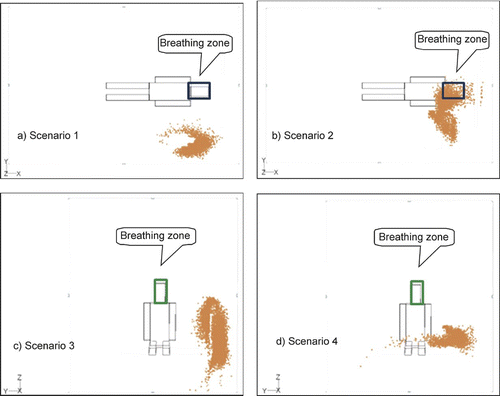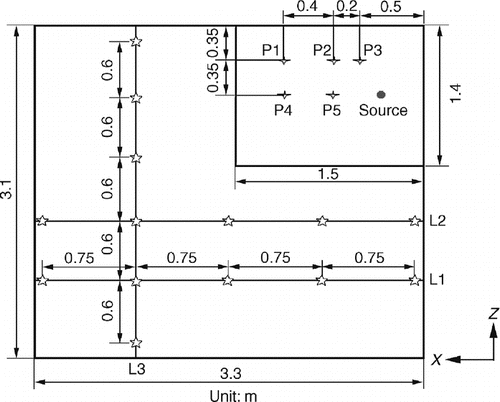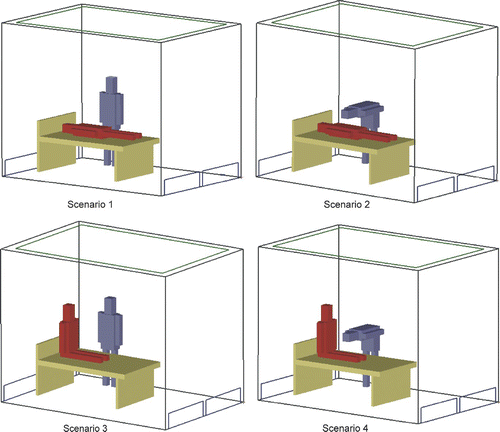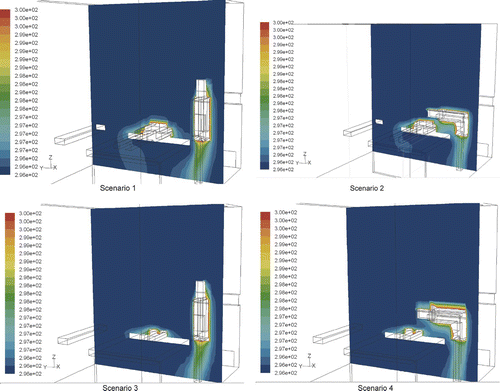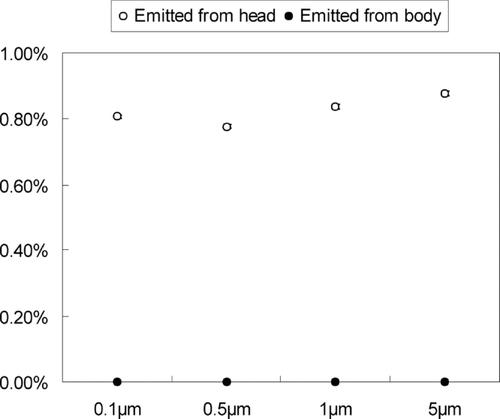Figures & data
TABLE 1 Information on the four nurse–patient interaction scenarios
FIG. 1 Layout of the protective environment A: patient care area, B: bathroom, 1: air supply openings, 2: air return openings, 3: air exhaust, 4: toilet, 5: particle generator.
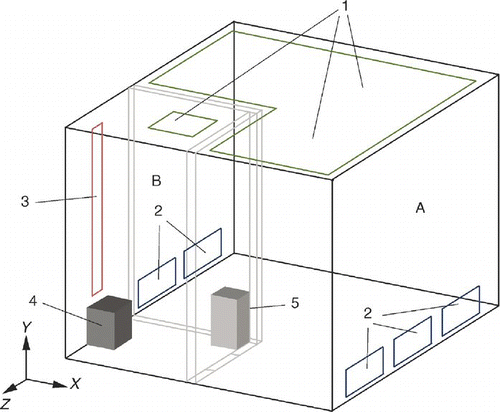
FIG. 3 Comparison of tested and simulated particle velocity at L1, L2, and L3. (a) L1 (Left: height of 0.8 m, Middle: height of 1.2 m, Right: height of 1.6 m). (b) L2 (Left: height of 0.8 m, Middle: height of 1.2 m, Right: height of 1.6 m). (c) L3 (Left: height of 0.8 m, Middle: height of 1.2 m, Right: height of 1.6 m).
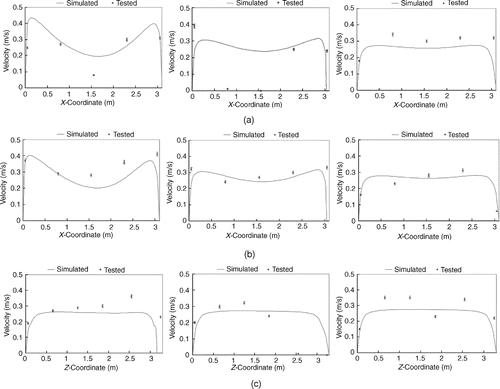
FIG. 4 Comparison of the simulated and tested dimensionless particle concentration at (a) position P1, (b) position P2, (c) position P3, (d) position P4, (e) position P5. Dimensionless concentration is defined as the local concentration relative to the concentration at the outlet.
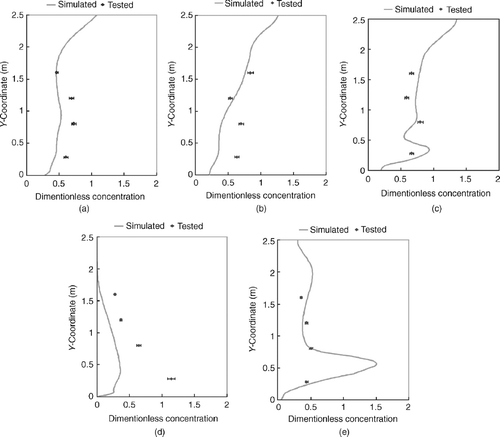
FIG. 6 The velocity vector at plane x = 2.8 m. (Arrow length represents the magnitude of velocity, with scale indicated by the reference bar for 0.2 m/s.)
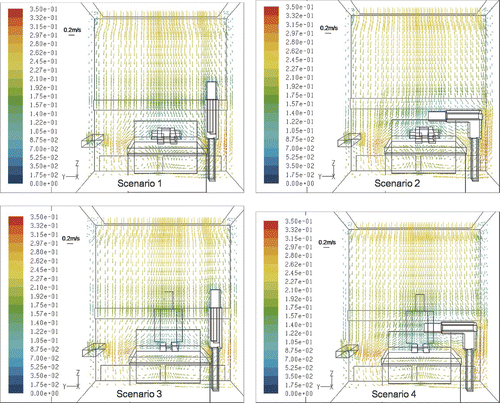
FIG. 8 Particle dispersion near the patient's breathing zone when the nurse's body is the particle source.
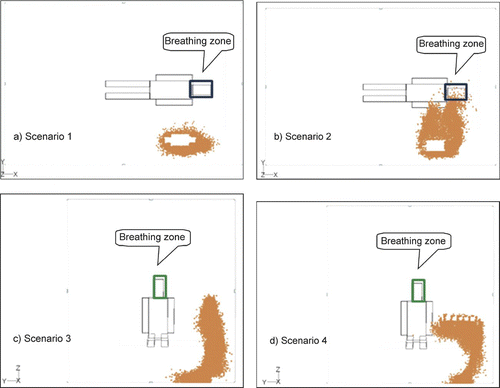
FIG. 9 Particle dispersion near the patient's breathing zone when the nurse's head is the particle source.
